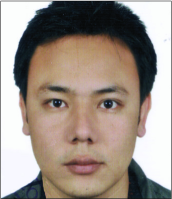Start from school projects

Dental caries is one of the most prevalent childhood diseases in Nepal, especially in the young children in the rural areas. Most of the dental caries are not treated due to the lack of knowledge, poor access to dental services, and the cost of dental treatment which leads to pain and eventually leads to tooth loss. A prevalence of 57.5% of 5–6 years old and 25.6% of children of 12–13 years old suffers from dental caries. The report of pain and discomfort due to toothache ranges from 18% in 5–6 years old to 64% in older adults. About 55% of 50+ year adults reported having trouble eating hard foods. This has hence got an indirect effect on the overall nutrition intake of the population resulting into other health problems.
Nepal being a mountainous country with lack of accessible road transportation, traveling in different parts of Nepal is difficult and risky. Similarly, the awareness of oral health care has not been reached to every part of the country. Current gaps present in an oral health are in monitoring and enforcement of policy, public awareness, education, advocacy, and implementation of strategies.
Schools are found as the ideal setting to deliver oral health awareness program in combination with preventive and curative services to achieve oral health promotion. School-based approach has been found to be more efficient because students are always learned fast and once they are made aware and habit is changed, knowledge can be spread rapidly. Oral health educational intervention through school has been successful in many developing and developed nations around the world.
“Start from School projects” were run in rural part of Lalitpur, Makawanpur, and Kathmandu districts of Nepal. Initially, the orientation classes were taken to the teachers of the school and health workers in those areas so that they can manage to run the program continuously in the long run. Training helped in monitoring and evaluation of the program. Initially, data on oral health condition and knowledge on oral health were taken through dental camps and questionnaires. The classes were taken to the students on brushing techniques and maintaining good oral health. Hangers were provided to put the brushes so that they can brush daily in the school during assembly. The daily program was supervised through the school teachers and health worker in that area. The project is integrated approach to reach schoolchildren, teachers, and community people.
Providing the students and their parents with the basic emergency treatment such as extraction of carious and problematic teeth and restoration of possible teeth with filling material help solve the problem to some extent. However, the change in knowledge, attitude, and practice was found important to improve the oral health condition of the people in rural area. The students were being provided with toothbrush and toothpaste before also but there were no significant changes. However, school toothbrushing program was found most effective. The impact seen after the program was that there was a significant reduction in the prevalence of untreated dental caries among schoolchildren in rural areas where oral health treatment facilities are hardly available.





Dr. Bijay Tamang
Program Director, Health and Development Society Nepal,
Hattiban, Kharikobot, Lalitpur
*Corresponding author:
Dr. Bijay Tamang Program Director Health and Development Society Nepal
Hattiban, Kharikobot, Lalitpur G.P.O. Box : 8975, EPC 1364, Kathmandu, Nepal
E-mail: pastdiarybijay@yahoo.com





